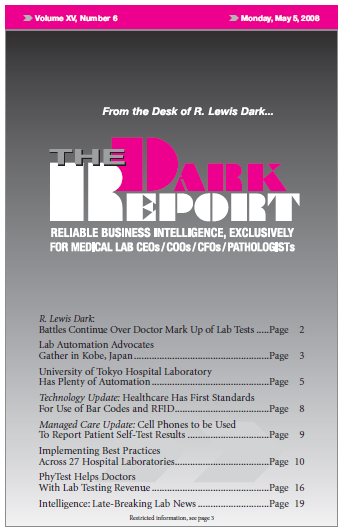CEO SUMMARY: In Japan, many clinical laboratories are in their third decade of using automation. At the University of Tokyo Hospital, total laboratory automation (TLA) was first implemented in 1991. Now on its fourth generation TLA system, this laboratory was worked upstream to automate specimen collection and urine collection, transport, and specimen preparation. The result …
Univ. of Tokyo Hospital Lab Has Plenty of Automation Read More »
To access this post, you must purchase The Dark Report.


